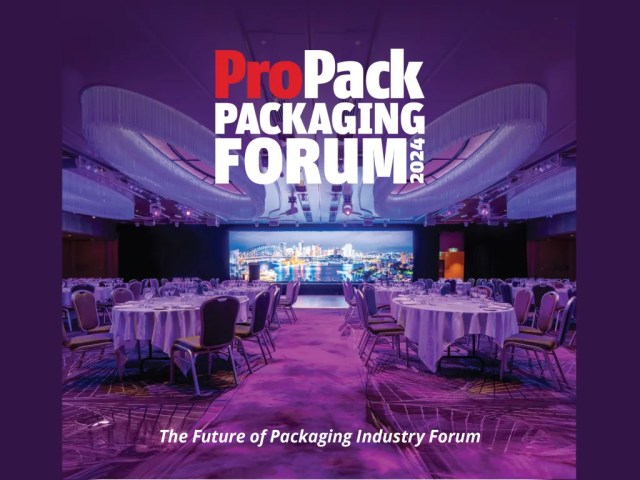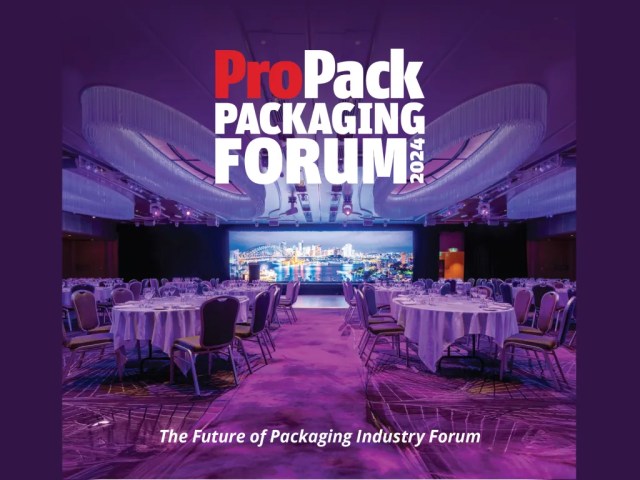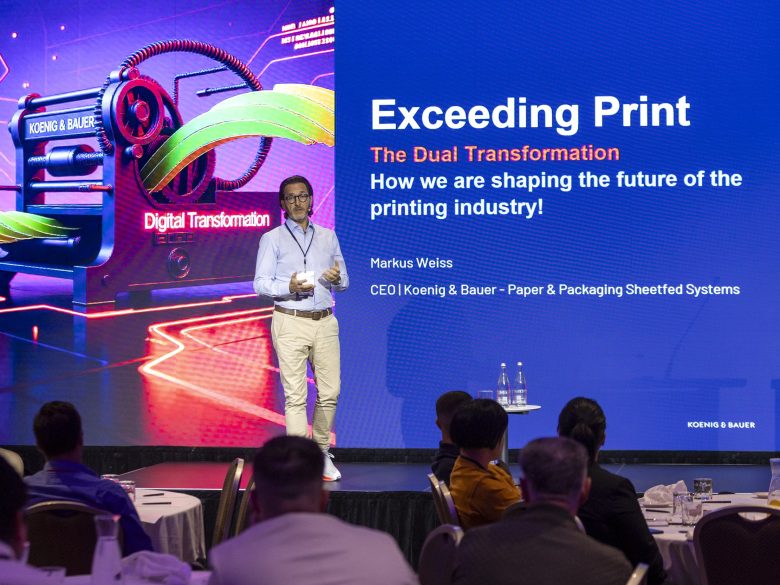
Several industry thought leaders from Australia and beyond were at the recent ProPack Packaging Forum that took place at the Shangri-La Sydney, sharing their knowledge during a day of conferencing and networking.
Now in its second year, the event explored cutting-edge technologies, sustainable solutions, and market opportunities in the evolving packaging landscape.
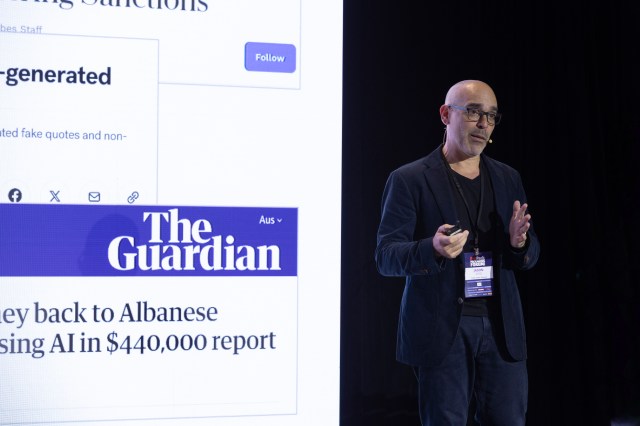
Headlining the conference was a keynote presentation by Time Under Tension co-founder Jason Ross, who addressed the difference between traditional AI and generative AI, and how to bring generative AI into production processes. He mentioned those that use AI to simply reduce costs and replace workers will be out competed by those that use it to expand their capabilities, adding that generative AI also creates “a whole world of possibility”, especially in customer experience. Using insights on where AI is being used in packaging, Ross also utilised Claude, an AI language model, to read the report and use the data and facts to build an interactive HTML based quiz which educates and informs about the world of generative AI and packaging. This was just one of several tools he used as an example during his session.
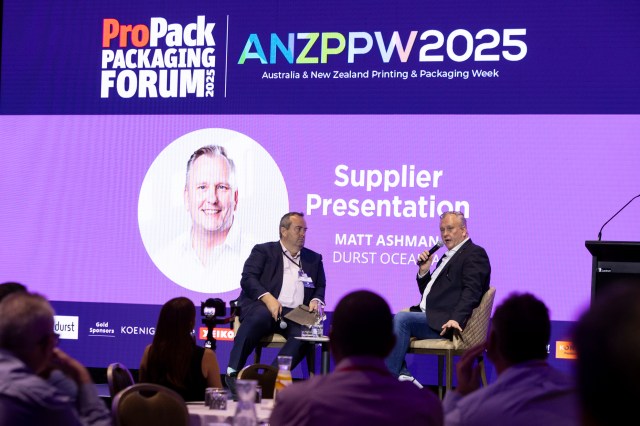
Durst Oceania managing director Matt Ashman discussed AI’s role in sustainability and innovation, saying it is a tool that needs to be harnessed. Ashman mentioned that AI is now being used at Durst, including in its chat bots within its service organisation to help its engineers search service manuals to get answers quicker, and to analyse its service tickets. Ashman also discussed Durst’s label machines and their use of AI algorithms in the background. In addition, Ashman spoke about how analogue production and digital production will run alongside each other for a long time, but advised attendees to keep in mind how the packaging industry is changing. He substantiated this with several Durst case studies, addressing how these customers achieved great results with Durst machines.
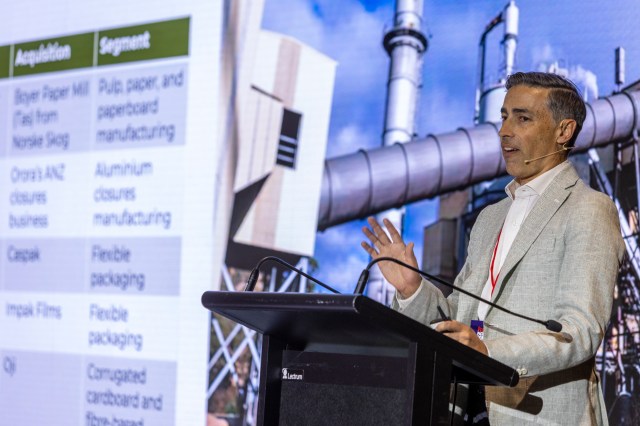
Also speaking at the forum was return speaker, Peter Fotiadis, a partner at Mattingly, who this year deep dived into yet another Australian packaging acquisition. He discussed the significant packaging acquisition of Oji Fibre Solutions Australia by Abbe Group, the largest independent corrugated packaging manufacturer in Australia. Abbe, led by the O’Sullivan family, focuses on medium- and small- run corrugated packaging with exceptional customer service. At the forum, Fotiadis said the acquisition, expected to complete by 1 November, will expand Abbe’s reach from Victoria and New South Wales to Queensland, enhancing its asset base and operational efficiency. He added the deal highlights the strategic importance of geographical expansion and operational synergies in the packaging industry.
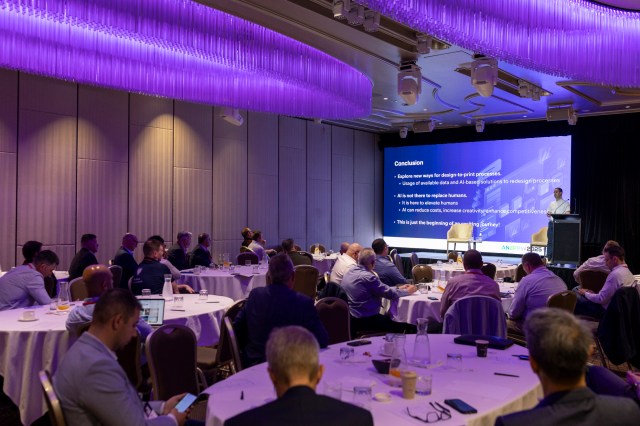
Making the trip over from Belgium again, Hybrid Software PACKZ product manager Pascal Wybo introduced AI-powered search engines and online editors for label and packaging design, calling it the ‘Tinder’ for labels and packaging. He also delivered his presentation featuring the latest advancements in software, including his take on the effect AI is already having in the industry, saying businesses need to start to explore new ways like the use of AI in how they are going to manage their processes. According to Wybo, it will help in making processes more efficient, reduce costs, and increase competitiveness.
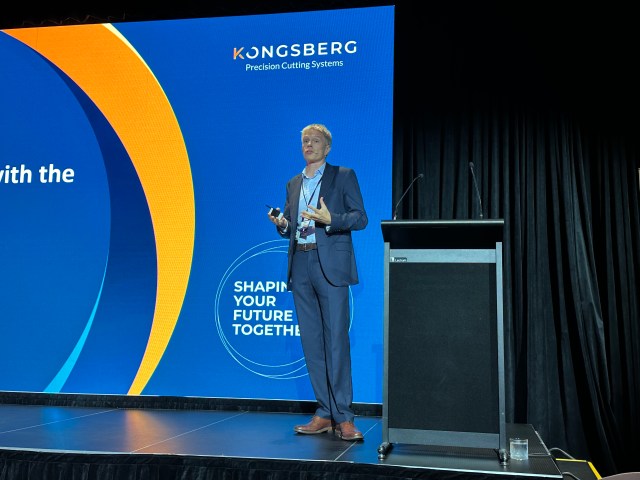
Making the trip over from the UK, Kongsberg Precision Cutting Systems (PCS) APAC and EMEA vice-president David Preskett discussed industry trends and product developments. He highlighted the need for longer run lengths in digital finishing, aiming for 400 boards, and the demand for less waste and more ecological solutions. Automation was emphasised as a key theme, with companies seeking unattended production and cost reduction. Customer stories also showcased significant productivity improvements and cost savings.
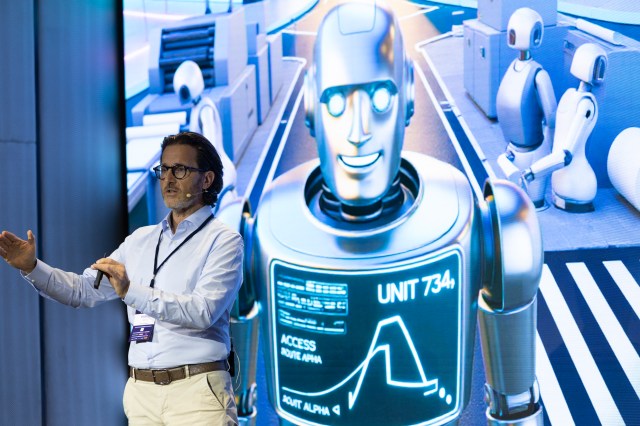
From Germany, Koenig & Bauer Paper & Packaging CEO Markus Weiss discussed the dual transformation in the packaging printing industry, emphasising the coexistence of digital and traditional printing. He highlighted the importance of smart products, citing examples like Coca-Cola’s individualised campaigns and Koenig & Bauer’s connected packaging solution, AURAVEO. Weiss also stressed the need for attractive work environments and advanced data management to enhance efficiency and predictive maintenance. He also mentioned the company’s investment in AI and automation to create a smart factory.
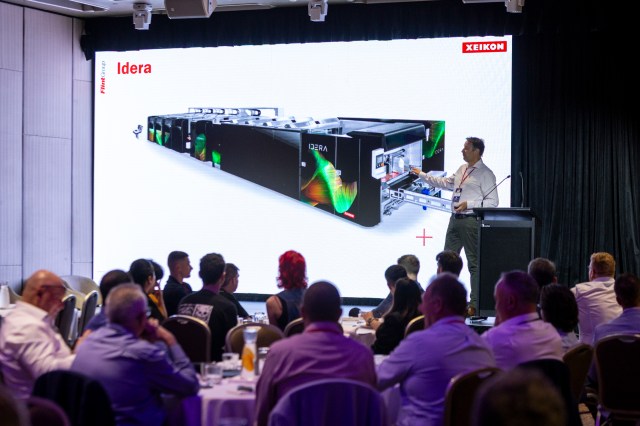
From the US, Xeikon A/NZ and North America president Robert Welford discussed the company’s role in digital packaging technology. Welford emphasised the sustainability of Xeikon’s toner, made from recycled water bottles, and predicted a shift towards reusable packaging. He noted that 80 per cent of digital printing uses toner, and 1,200dpi technology is the future. Welford also addressed the impact of tariffs and the continued relevance of conventional print despite digital’s growth.

Print and Pack (representing Bobst) sales manager Miro Williams discussed the packaging industry’s evolution, emphasising Bobst’s role as a global leader with more than 130 years of experience and 32,000 machines in 175 countries. Bobst’s innovations include advanced machinery, data capture systems, and the integration of Dücker Robotics. The company focuses on efficiency, sustainability, and digitalisation, aiming to reduce waste and improve agility. Key trends that Williams mentioned in his session include shorter run lengths, digitalisation, and the adoption of the one ECG platform for consistent colour across different processes. Future projections that he highlighted include the importance of automation, robotics, and efficiency in the packaging industry.
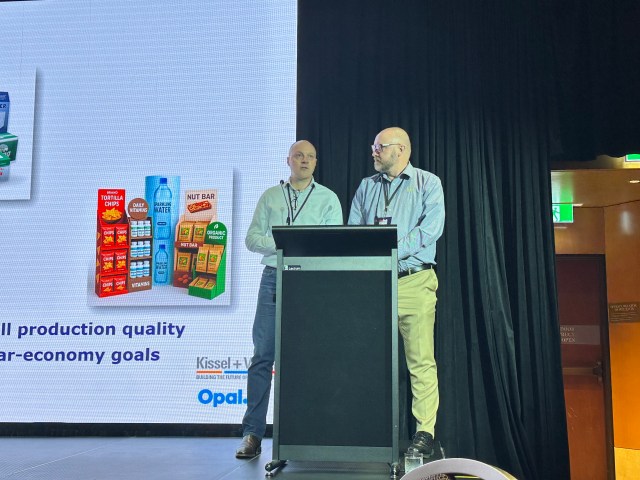
Kissel + Wolf Australia managing director Jamie Weller, together with customer Opal packaging division executive manager Rod Turnbull, spoke about Opal’s recent launch of a ‘wonderland awash’ at its Innovation Expo, with vibrant colour, show-stopping design, and clever engineering – all made from cardboard and powered by digital technologies including advanced digital printing and cutting systems from Kissel + Wolf. The duo also discussed how new digital printing and cutting technologies redefine speed, flexibility and creative possibilities, and spotlight end-to-end packaging capabilities.
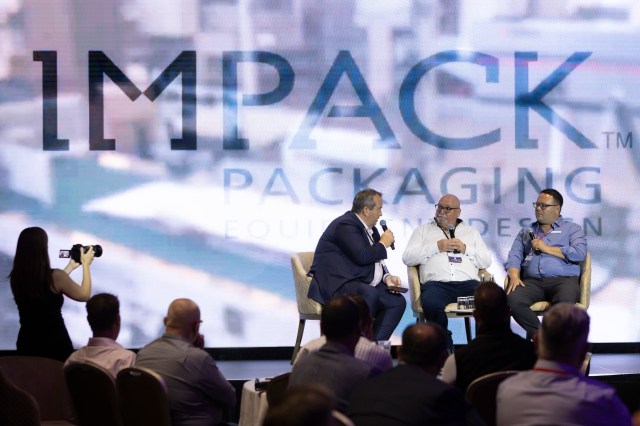
DieLine Solutions managing director Ian Gillanders, together with Impack sales team leader Maxime Jacques, spoke aboutthe benefits of semi-automatic and fully automatic packers over manual processes, highlighting labour cost savings and reduced injuries. The discussion emphasised the importance of starting with semi-automatic solutions before fully automating. The duo said the industry is expected to see more acquisitions and consolidations, with labour shortages and high costs driving automation to continue, leading to the need for automatic machinery that can help alleviate those challenges and provide the industry with some flexibility in packaging.
Several panel discussions also provided engaging conversations – Next Printing managing director Romeo Sanuri, Carbon8 co-founder and co-director Kenneth Beck-Pedersen, Mediapoint director Jamie Xuereb, and IVE Group managing director Matt Aitken discussed the future of packaging, while in a separate session, Colemans graphic designer Tommy Mavros, Westrock lithographic printer Robert Neale, and Harden Packaging flexo printing apprentice Jackson Young discussed the next generation in packaging.
Read the December issue of ProPack.pro for a more detailed coverage of the event.
The ProPack Packaging Forum would not be possible without its sponsors:
Platinum – Durst
Gold – Koenig & Bauer and Xeikon
Silver – Cyber
Bronze – Bobst, DieLine Solutions, Hybrid Software, Kissel + Wolf, and Kongsberg Precision Cutting Systems
Comment below to have your say on this story.
If you have a news story or tip-off, get in touch at editorial@sprinter.com.au.
Sign up to the Sprinter newsletter


